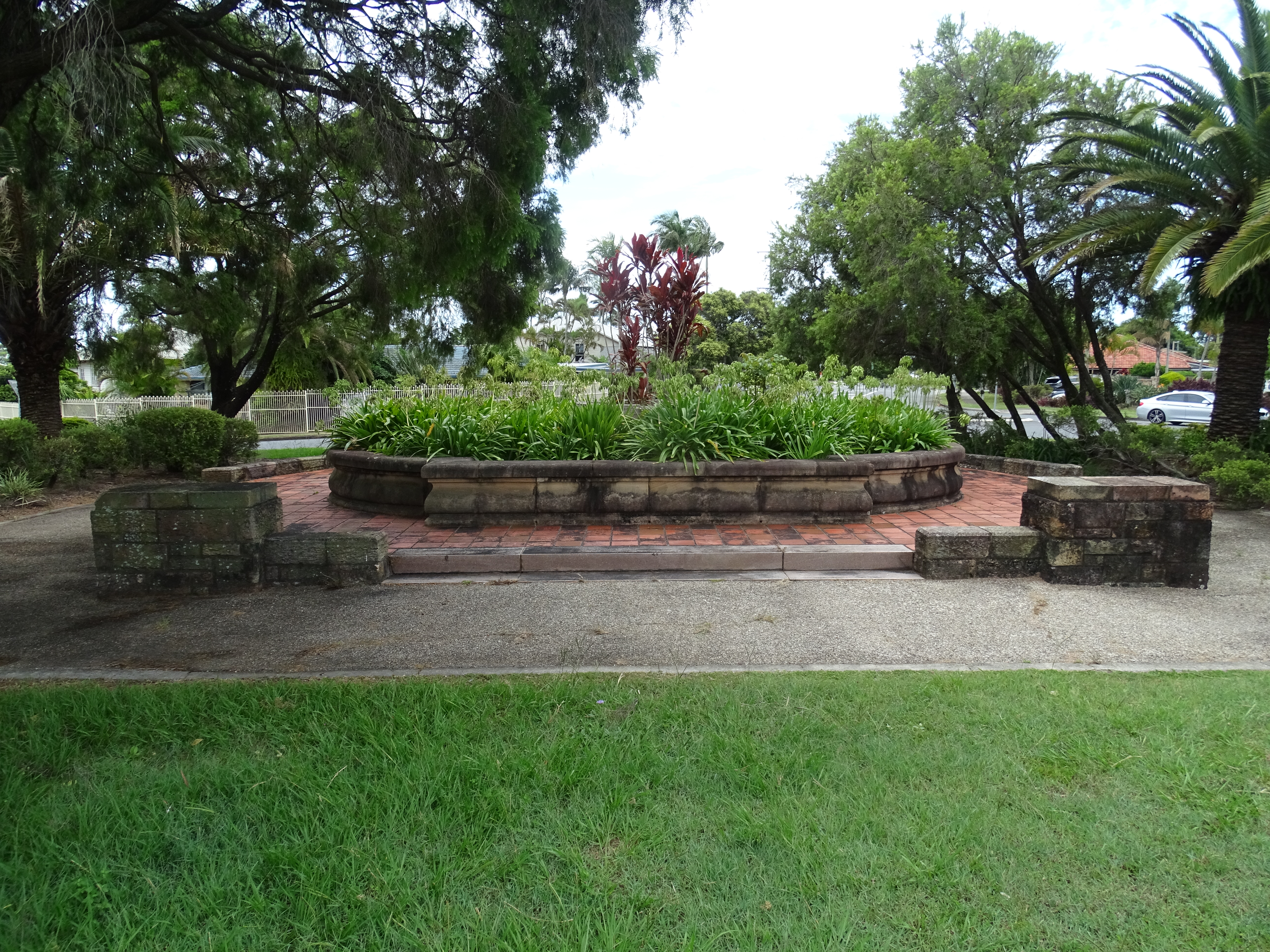Addresses
Type of place
Fountain
Period
Postwar 1945-1960
Style
Free Classical
Addresses
Type of place
Fountain
Period
Postwar 1945-1960
Style
Free Classical
The former City Hall fountain is significant as a remnant of the formal forecourt to Brisbane City Hall that existed prior to its redevelopment in the 1960s and 1970s and for the craftsmanship evident in the sandstone and porphyry stonework.
Geolocation
-27.454329 153.167155
Key dates
Local Heritage Place Since —
Date of Citation —
Construction
Structure: StoneCriterion for listing
(B) Rarity; (E) AestheticInteractive mapping
Geolocation
-27.454329 153.167155
Key dates
Local Heritage Place Since —
Date of Citation —
Construction
Structure: StoneCriterion for listing
(B) Rarity; (E) AestheticInteractive mapping
History
Brisbane’s City Hall was designed by T.R. Hall and G.G. Prentice and opened in 1930. Albert Street was retained as a thoroughfare and formed a forecourt to the City Hall’s imposing façade. A large flight of granite steps led from street level to the central main entrance portico. The streetscape was softened by plantings of red cannas, poinsettia and specimen palms (Blake et al., p. 8).
In March 1936, the death of King Geroge V prompted the construction of a memorial to the late King. In 1938 the area was renamed and the competition-winning sculpture was unveiled. It comprised an bronze equestrian statue of the King on a granite and sandstone pedestal, flanked by a bronze lion on either side. These were arranged on stone terrace. The memorial proved to be controversial and the media fuelled debate on the excessive height of the pedestal and its capacity to obstruct the area available for mass congregations.
In 1939 the committee who oversaw the procurement of the memorial approved the construction of two fountains. Work commenced on the fountains in that year, however the Second World War intervened and they were eventually commissioned and commenced operation in 1949.
In 1959 the Town Clerk commissioned a report on the proposed extension of King George Square and in 1962 the Council began negotiating the acquisition of all properties on the opposite side of Albert Street. As with previous changes to the Square, controversy ensued. In 1967 Albert Street was permanently closed to traffic between Adelaide and Ann Streets and construction commenced on the large underground carpark that would lie below the new Square. The proposed design entailed the raising of the Square to be level with the main entrance, the removal of King George to the Ann Street side of the Square and the replacement of the existing fountains with a new large central fountain. The redeveloped King George Square was officially reopened in 1975.
One of the two fountains was reconstructed on the Preston Road roundabout. The fate of the other is unknown.
Description
The former City Hall Fountain stonework was reassembled as part of an ornamental garden bed at this major intersection in Wynnum West. The former pond surrounding the fountain is now a raised planter bed.
The plan of the centre bed or former pool is rectangular, with a semi-circular projection on each short side. The walls of the bed are approximately 0.5m high above the surrounding terrace and constructed of sandstone blocks, dressed to a cyma reversa profile and surmounted by bullnosed capping pieces. Porphyry dwarf walls and dressed granite steps are concentrically arranged around the pool wall, thus containing the terracotta paved terrace and marking the limits of the original City Hall stonework.
In contrast to the smooth curves of the former pond wall, the porphyry walls are constructed in hammer-finished, random ashlar. A pebbled path surrounds the porphyry wall and is in turn bounded by lawns and planted beds.
The removal of the stonework from its original context has greatly reduced the significance of the former fountain. Its original setting in the traffic island outside City Hall was strictly symmetrical. This arrangement echoed not only the formality of the building’s façade, but its hierarchical assembly of elements. The dominance of City Hall’s central clocktower and portico over the flanking colonnades had a corresponding order in the elevation of the King George equestrian statue over the flanking lions and the shallow fountains on each side of them. Paired with its opposite number, the fountain was thus an integral part of the formal setting outside City Hall.
The relocation to a busy traffic island, far from its original location, practically devoid of any pedestrian traffic and lacking a formal setting, leaves the former fountain isolated and unappreciated. However the stonework is significant as a relic of its former setting and is, in itself, finely crafted.
Statement of significance
Relevant assessment criteria
This is a place of local heritage significance and meets one or more of the local heritage criteria under the Heritage planning scheme policy of the Brisbane City Plan 2014. It is significant because:
References
-
Brisbane City Council - City Assets Branch Conservation Management Study Stage 1 Report. November 2002
Citation prepared by — Brisbane City Council (page revised February 2023)

